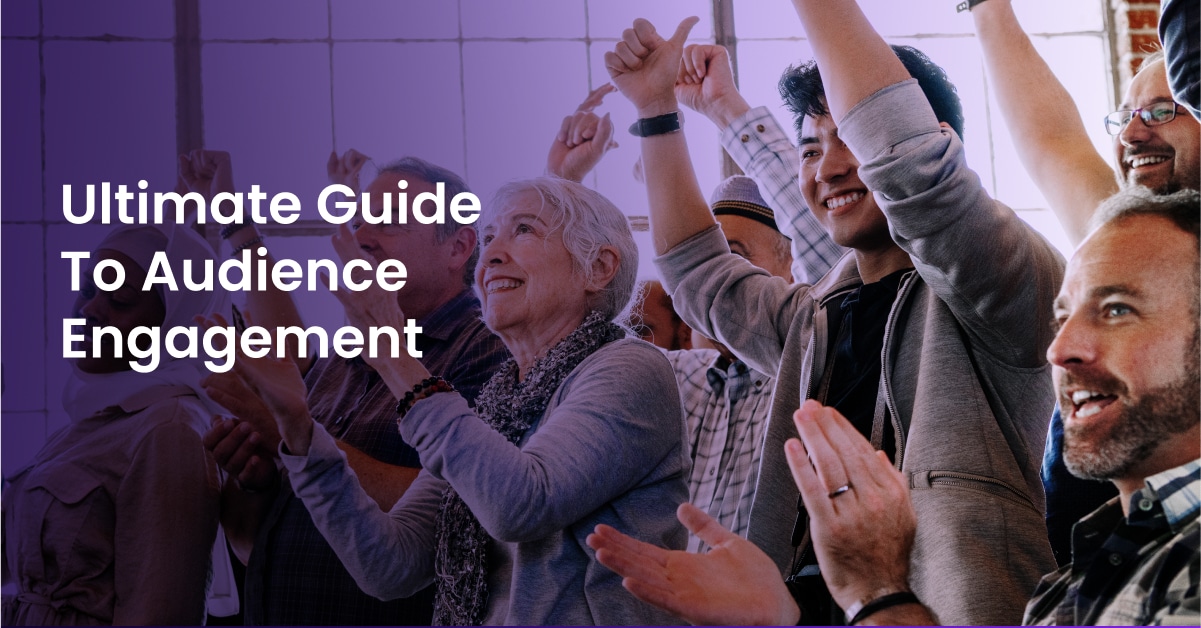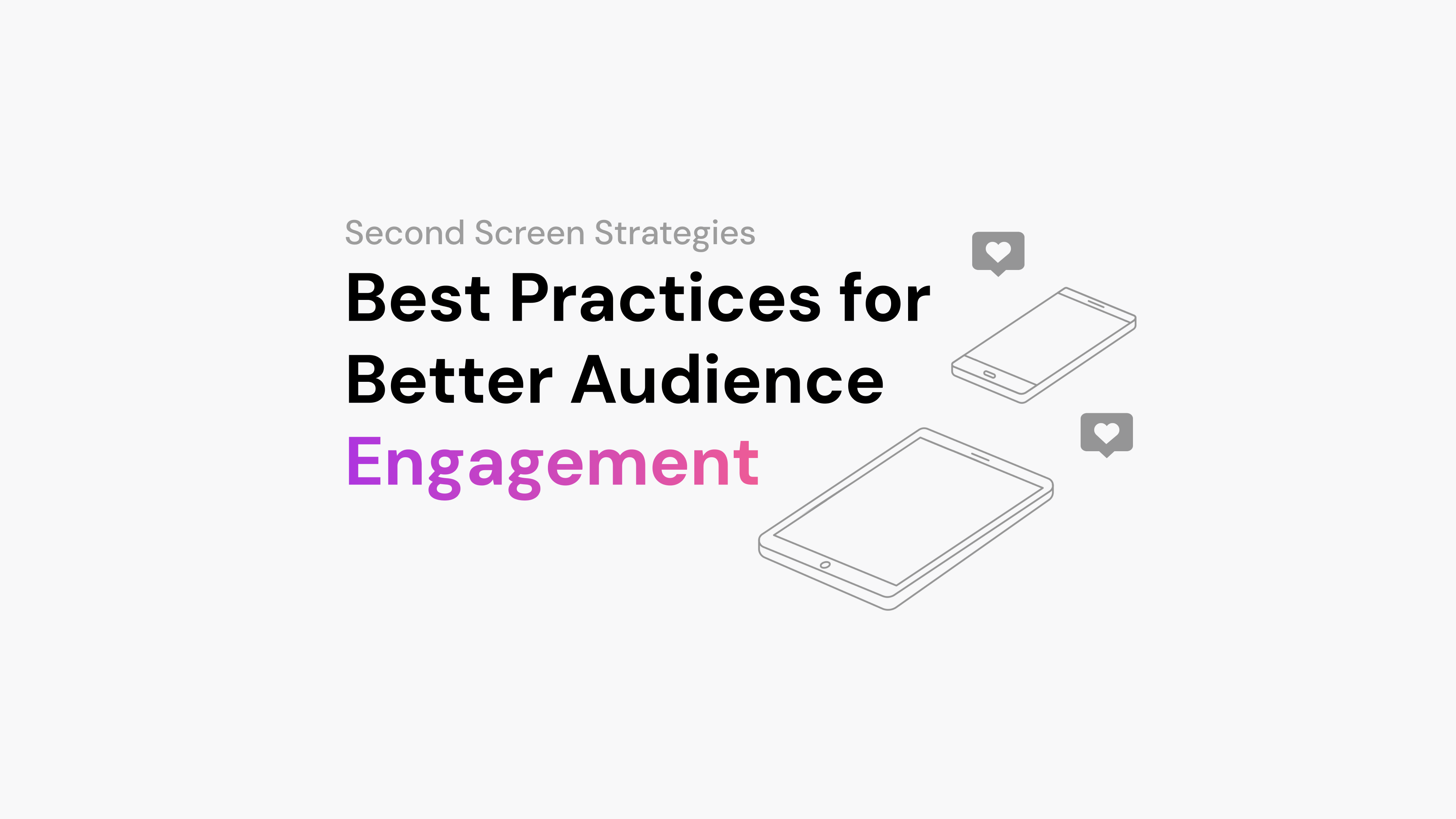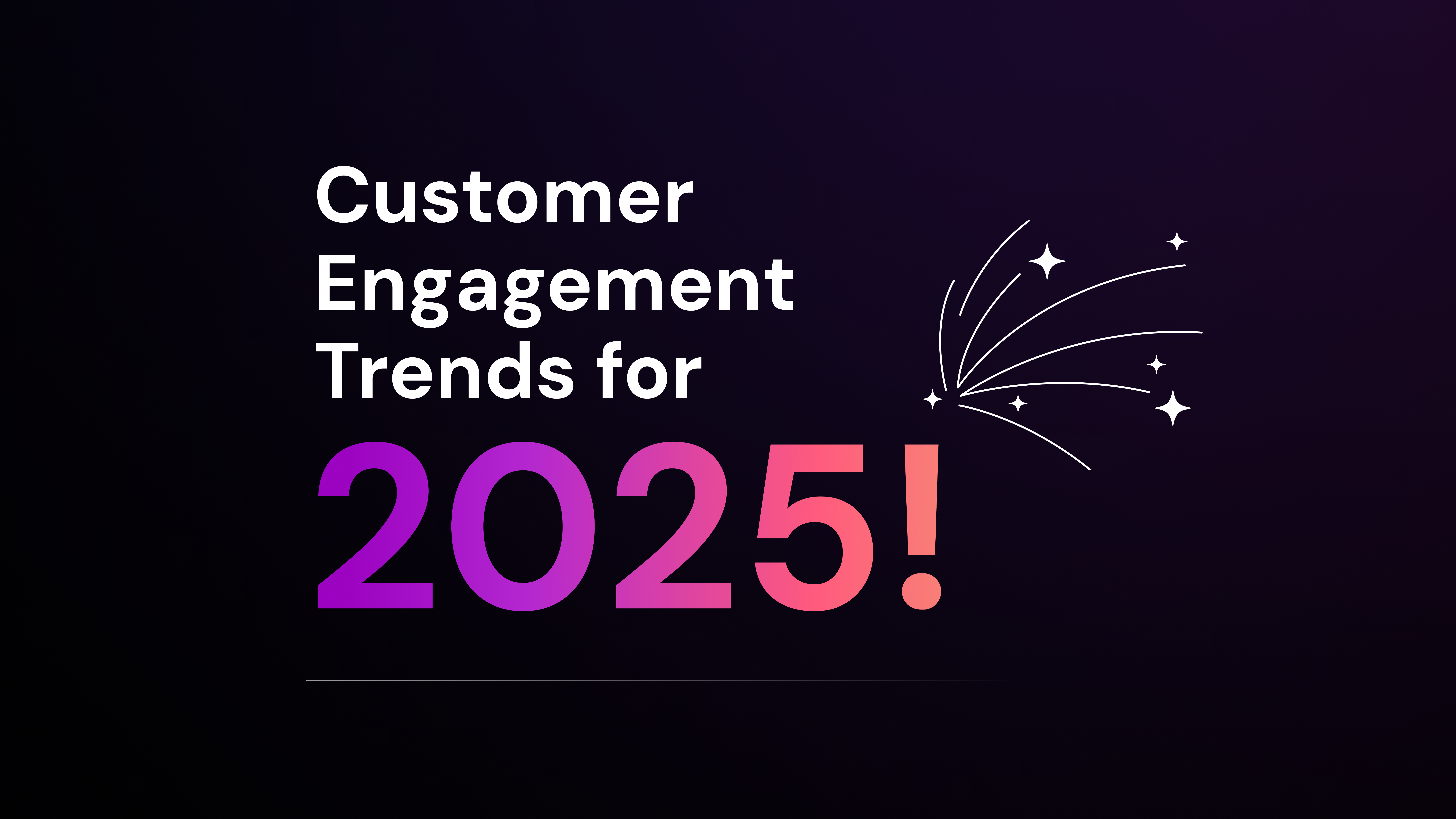How To Increase Audience Engagement?
To increase audience engagement, it is important to use effective engagement strategies, leverage social media for boosting interaction, and track engagement metrics. Specific tactics and tools can help manage and enhance these efforts significantly.
What Are The Most Effective Engagement Strategies?
A few highly effective engagement strategies include:
- Posting Relevant Content: Share content that resonates with your audience. Focus on their interests and needs to keep them engaged.
- Interactive Elements: Use polls, quizzes, and ask a question features to encourage more interaction.
- Regular Updates: Maintaining a consistent posting schedule helps retain interest. Knowing the best time to post can maximize visibility.
- Encourage Feedback: Prompt followers to share their thoughts and experiences. This can be done through comments, mentions, and replies to posts.
- Call to Action (CTA): Include clear and inviting CTAs in your posts such as “comment below,” or “share this post.”
How Can Social Media Boost Audience Interaction?
Social media platforms like Facebook, Instagram, Twitter, and TikTok can significantly enhance audience engagement.
- Facebook: Use Facebook groups and live sessions to create a community feel and promote facebook engagement through real-time interaction and updates.
- Instagram: Utilize Instagram Stories, Reels, and the algorithm to boost interaction. Encourage instagram engagement by sharing visually appealing content and engaging followers with questions and polls.
- Twitter: Engage with followers through replies and retweets. Twitter chats can also be a great way to involve the audience in discussions around specific topics.
- LinkedIn: For professional audiences, share industry insights and prompt conversations around trending topics. This helps to increase your credibility and visibility on the platform.
Making use of these platforms effectively can lead to increased follower interaction, likes, and shares, broadening your reach.
What Tools Can Be Used To Track Engagement Metrics?
Tracking engagement metrics is key to understanding what works and what doesn’t in your engagement strategies.
- Analytics Tools: Platforms like Sprout Social provide comprehensive analytics to track comments, likes, shares, and more on various social media platforms.
- Built-in Platform Analytics: Most social media platforms, including Facebook, Instagram, and Twitter, offer built-in analytics tools to monitor engagement.
- Google Analytics: This can track engagement on your website, measuring how visitors interact with your content.
- Dashboard Tools: Tools like Hootsuite and Buffer allow you to manage multiple social media accounts and track performance from a single dashboard.
Using these tools ensures you can adjust your strategies based on concrete data, leading to better audience engagement.
Why Is Audience Engagement Important?
Audience engagement plays a crucial role in enhancing connections with customers, boosting brand loyalty, and driving sales and conversions. Engaged audiences often show a stronger relationship with the brand, leading to better business outcomes.
How Does Engagement Impact Sales?
Engaged audiences are more likely to convert into paying customers. When users interact with content, they develop a stronger connection to the brand. This bond often translates to increased trust, making them more likely to purchase products or services.
For instance, tracking metrics can help in adjusting strategies to elevate audience engagement, as Sprout Social mentions. If visitors spend more time on a website or frequently share content, these behaviors signal higher potential for conversions. Therefore, by focusing on engagement, businesses can see a direct impact on their sales figures.
What Is The Connection Between Engagement And Brand Loyalty?
Audience engagement fosters brand loyalty, which is essential for long-term success. When consumers feel connected to a brand, they are more likely to return for future purchases and recommend it to others. This continuous cycle of engagement and loyalty can significantly boost a brand’s presence and credibility.
For example, using visuals and interactive elements can enhance memory retention and interest, as discussed by The Sketch Effect. When audiences remember and value the content, they develop a deeper relationship with the brand, which in turn nurtures loyalty. Thus, a high level of audience engagement can lead to more loyal customers who advocate for the brand.
What Are Key Metrics To Track For Audience Engagement?
To effectively increase audience engagement, it’s important to monitor specific metrics that provide insights into how your content resonates with your audience. Tracking these metrics can guide your strategy and help improve your overall performance.
How Can You Measure Social Media Interactions?
Engagement Rate: This is a vital metric that shows how actively your audience interacts with your content. It includes likes, shares, comments, and other actions that indicate interest. A higher engagement rate means your content is more compelling.
Impressions: This metric showcases the number of times your content is displayed. While impressions don’t guarantee engagement, they are important for brand visibility.
Click-Through Rate (CTR): CTR measures how often people click on a link in your content, such as a call-to-action or a product link. It is crucial for understanding the effectiveness of your promotions.
Conversion Rate: This tracks how many actions (like sign-ups or purchases) result from your social media efforts. It helps in assessing the ROI of your campaigns.
For more detailed insights, tools like Sprout Social’s social media metrics provide robust analytics for better decision-making.
What Analytics Tools Are Recommended?
Hootsuite Analytics: This tool offers a comprehensive suite of features to monitor multiple social media channels. It includes tracking metrics like engagement rate, impressions, and more. Hootsuite also provides industry benchmarks to help you understand how you compare to your competitors.
Google Analytics: It’s essential for tracking website engagement metrics such as page views, session duration, and bounce rate. These metrics are crucial for understanding visitor behavior on your site.
Social Listening Tools: Tools like Brandwatch and Mention help track conversations about your brand across social media platforms. This can give you insights into how your audience perceives your brand and identify areas for improvement.
Video Views: For platforms focused on video content, tools like YouTube Analytics can provide detailed metrics on video performance, including watch time and viewer retention.
For more robust social media monitoring, Hootsuite Analytics is highly recommended.
How To Personalize Content For Better Engagement?
Personalized content can effectively boost engagement when it is tailored to the audience’s needs and preferences. To achieve this, it’s crucial to follow best practices and leverage user data.
What Are The Best Practices For Personalization?
One of the best practices for personalizing content is to clearly define the target audience. By understanding their demographics, interests, and values, content creators can make the content more relatable. Tools like analytics platforms provide insights that help in crafting audience-specific content.
Another approach is to use personalized visuals. For example, incorporating authentic images and photos relevant to the audience can enhance engagement. This not only captures attention but also builds credibility.
Competitor analysis is another key practice. Observing what competitors are doing can provide valuable insights into what works and what doesn’t. This helps in creating unique content that stands apart. Personalization should align with the brand’s mission and values—keeping the content authentic is vital.
How Can User Data Be Used To Customize Content?
User data is essential in crafting personalized content. Through data analysis, companies can identify user preferences, behavior, and interaction patterns. This data-driven approach enables content creators to deliver highly relevant content to users.
For instance, user segmentation allows for creating customized messages for different audience segments. By tracking user activity, such as pages visited and items clicked, companies can send tailored recommendations.
Leveraging user data can also be beneficial for reducing bounce rates and increasing dwell time. According to LinkedIn’s advice on engagement, personalized calls-to-action can significantly improve conversion rates. A simple example is sending personalized email campaigns based on past purchase history, which encourages users to return and re-purchase.
Data privacy should be respected at all times. Transparency about data usage helps in maintaining the audience’s trust.
How Does UX/UI Influence Audience Engagement?
Effective UX/UI design can significantly boost how users interact with digital platforms. Key factors include intuitive navigation, appealing design, and user-centric features that enhance user satisfaction and drive higher engagement rates.
What UX/UI Elements Encourage User Interaction?
Quality user research shapes effective UX/UI elements by aligning them with users’ needs and preferences. This involves creating intuitive navigation, which makes it easy for users to find what they need quickly.
Visual Hierarchy helps users to scan content efficiently. Using font sizes, colors, and layout to emphasize important information can guide users’ actions effectively. Additionally, interactive elements like buttons and forms encourage users to engage more.
Clear calls-to-action (CTAs) are crucial. They should stand out visually and use compelling language to prompt users to take desired actions.
Using micro-interactions can also enhance user experience. These are small animations or design features that provide feedback or guide users through their tasks. For instance, a button changing color when clicked confirms the action to the user.
How To Optimize Website Design For Better Engagement?
Designing for mobile devices is essential. A responsive design ensures that a website functions well across various devices, which can significantly improve user engagement.
Fast loading times are critical. Studies show that slow pages can cause users to leave, so optimizing images and scripts to enhance speed is vital.
Incorporating clear and simple navigation structures improves user experience. This includes well-labeled menus, a search function, and easy-to-find contact information.
Moreover, leveraging live chat experiences can boost engagement by allowing users to interact in real-time, addressing their queries instantly.
Using consistent branding helps users feel confident in a site’s reliability. This means consistent colors, fonts, and logo placements.
Lastly, high-quality content that is target audience focused attracts and retains users’ attention, driving engagement levels up.
What Role Does Content Quality Play In Engagement?
Content quality directly impacts how audiences interact with a brand. High-quality content resonates with readers, entertains, and encourages them to take action, like sharing or commenting.
How To Produce High-Quality Content?
High-quality content starts with a well-planned content strategy. It should be relevant to the target audience and provide valuable information or entertainment. Regularly updating and refining content based on audience feedback is key.
Including a mix of informative articles, entertaining videos, and user-generated content can keep readers engaged. Reviews and behind-the-scenes content also add credibility.
Using humor and emotion in the content can create a memorable experience for the viewer. It’s crucial to make content visually appealing with good design and images. For more on producing high-quality content, check out audience engagement strategies.
What Content Formats Drive The Most Engagement?
Certain content formats tend to drive higher engagement. Videos are particularly effective due to their visual appeal and ability to convey a lot of information quickly.
Memes and shareable content also tend to perform well, especially if they entertain or inspire.
Behind-the-scenes content can humanize a brand, making it more relatable. Reviews and user-generated content build trust and credibility.
Utilizing different formats and tracking their performance can help refine what works best. Engaging formats not only capture attention but also encourage users to interact and share, increasing a brand’s reach. For more on content engagement, visit Small Business Trends.
What Are Common Mistakes In Audience Engagement Efforts?
To boost audience engagement, marketers must avoid common pitfalls and ineffective strategies in their plans. These mistakes can reduce the effectiveness of engagement efforts and result in lost opportunities.
How To Identify And Avoid Engagement Pitfalls?
A crucial misstep is failing to understand the target audience. Without knowing the audience’s preferences and behaviors, engagement efforts can miss the mark. Marketers should prioritize audience research, which includes studying demographics and interests.
Another mistake is neglecting to test and adjust strategies. Regular testing, such as A/B testing, can show what resonates with the audience and what doesn’t. Ignoring this step can lead to ineffective messaging and missed engagement chances.
Lastly, some brands make interactions too sales-focused. An overly aggressive sales pitch can turn off potential customers. Engagement should be about creating value and building relationships, not just pushing sales.
What Strategies Are Ineffective?
Using outdated methods like one-way communication can limit audience engagement. Today’s audiences expect interactive content and personalized experiences. Brands should use two-way communication, where users can comment, share, and interact with posts.
Ignoring feedback is another ineffective strategy. Brands often make the mistake of not listening to their audience. Feedback provides insights into what the audience likes and dislikes, helping to refine engagement strategies.
Lastly, having no clear call-to-action (CTA) can make efforts fall flat. CTAs guide the audience on the next steps, such as signing up for newsletters or visiting a landing page. Without clear instructions, engagement can drop, and the brand can lose potential customers.
By avoiding these common mistakes, marketers can improve their audience engagement strategies and foster better connections with their audience.
Frequently Asked Questions
Increased audience engagement can be achieved through various strategies during live events, on social media, and by using interactive content. Businesses can also measure and analyze engagement and tailor their approaches in marketing campaigns.
What are effective strategies for enhancing engagement during live events?
Creating interactive sessions such as Q&A and polls keeps audiences actively involved. Using engaging visual aids and storytelling during presentations helps maintain interest. Providing networking opportunities ensures participants interact not only with the content but also with each other.
What techniques can be used to boost involvement on social media platforms?
Posting consistently is key. Using questions and interactive posts like polls can boost engagement. Sharing user-generated content and responding promptly to comments also helps. Specific strategies can be found in lists of the best social media engagement questions and advice.
How can interactive content contribute to increased audience participation?
Interactive content such as quizzes, surveys, and live demonstrations engages users more effectively than static content. This participation not only keeps the audience entertained but also encourages them to share their experiences, leading to wider reach and engagement.
In what ways can audience engagement be measured and analyzed for improvement?
Metrics such as click-through rates, likes, shares, comments, and time spent on content are essential. Analyzing these metrics helps identify what works best and what needs tweaking. Tools and best practices for measuring engagement are discussed in detail in audience engagement strategies.
What role does storytelling play in engaging an audience during presentations?
Storytelling makes content relatable and memorable. It helps convey messages in an emotional and interesting manner, keeping the audience captivated. The use of real-life examples and clear narrative structures enhances overall engagement during presentations.
How can businesses tailor their audience engagement approaches in marketing campaigns?
Businesses should focus on understanding their audience’s preferences and behavior. Customizing content and engagement tactics based on audience insights can significantly enhance effectiveness. Strategies like these are elaborated in audience engagement strategies for event planners.



